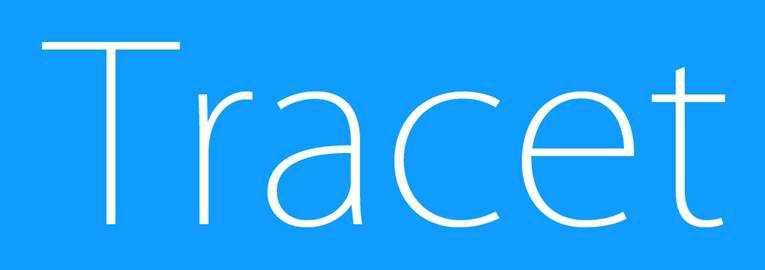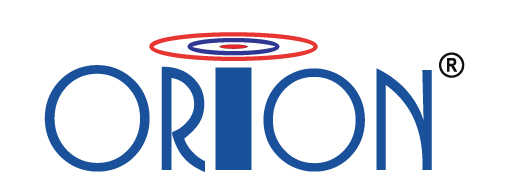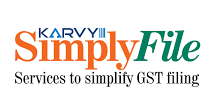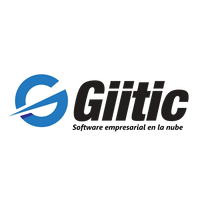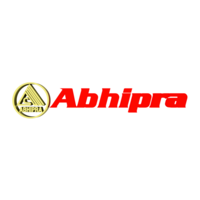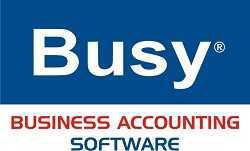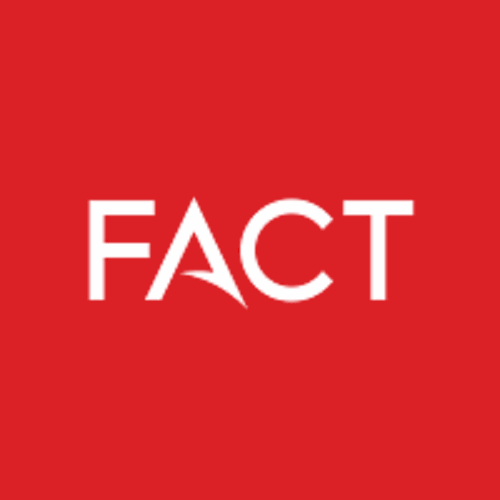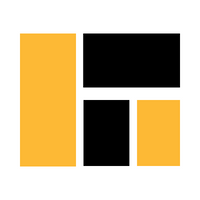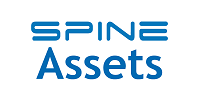What Is Fixed Asset Accounting Software?
Fixed asset accounting software is a form of financial software that enables firms to track and manage their fixed assets. Fixed assets are long-term tangible assets, such as buildings, equipment, and vehicles, that are critical to a company's operations and have a useful life of more than a single year. This software enables organizations to accurately record, reconcile, and report on their fixed assets, which is a time-consuming and complex task if done manually.
One of the primary characteristics of fixed asset accounting software is the ability to automate the depreciation process. Depreciation is the progressive decline in value of an item over time, and it is an important factor for firms to consider when computing taxes and financial statements. This software allows firms to effortlessly calculate and track depreciation for all fixed assets, providing precise and compliance financial reporting.
In addition, fixed asset accounting software includes asset tracking, maintenance scheduling, and asset disposal management. These capabilities enable firms to track the location, condition, and usage of their assets, as well as arrange routine maintenance and track asset disposals. For businesses with several locations or a big number of fixed assets, this software can be very useful.
It provides a consolidated and organized system for managing all fixed assets, lowering the likelihood of errors and increasing efficiency. When choosing fixed asset accounting software, look for a user-friendly interface, customizable reporting options, and connectivity with other financial tools, such as general ledgers and inventory management systems. It is also vital to examine the software's scalability, as organizations may require additional fixed assets as they grow.
Investing in fixed asset accounting software can help organizations manage their fixed assets more accurately and efficiently. It can save time, eliminate errors, and increase adherence to financial requirements. Understanding the features and capabilities of this software allows organizations to select the finest alternative to match their individual demands while also improving overall financial management.
What Are The Recent Trends In Fixed Asset Accounting Software?
Fixed asset accounting software is an essential tool for organizations to successfully manage their assets, track depreciation, and meet accounting rules. As technology advances, this category of software adapts to meet the changing needs of enterprises. To make educated purchasing decisions, buyers must stay up to date on the latest trends in fixed asset accounting software. Here are some of the most recent trends in this area.
1. Cloud-Based Solutions: As cloud technology gains popularity, a rising number of fixed asset accounting software companies are introducing cloud-based solutions. Businesses can now access their asset data from anywhere at any time, eliminating the need for on-premise installation and maintenance.
2. Integration With Other Systems: Fixed asset accounting software is increasingly being integrated with other systems, such as general ledger and enterprise resource planning (ERP) software, to improve efficiency and accuracy. This enables seamless data transfer while lowering the possibility of errors caused by human data entering.
3. Automation And Artificial Intelligence (AI): Many fixed asset accounting software now has tools that automate typical chores like data entry and depreciation calculations. Artificial intelligence (AI) enables better forecasting and decision-making capabilities.
4. Mobile Accessibility: As more firms use mobile devices in their daily operations, fixed asset accounting software suppliers have acknowledged this trend. As a result, many software companies now provide mobile apps or mobile-friendly online versions, allowing users to manage their assets on the go.
5. Risk Management: With increased rules and compliance requirements for businesses, risk management is becoming an increasingly significant facet of fixed asset accounting. As a result, many software companies are now offering tools that assist firms in tracking and mitigating asset-related risks.
6. Real-Time Tracking: With the advent of Internet of Things (IoT) technology, asset tracking has become more precise and efficient. Many fixed asset accounting software now supports real-time tracking, allowing firms to properly monitor and report on the location and status of their assets. Keeping track of these trends can help buyers make more educated selections when selecting fixed asset accounting software for their organization. Evaluating the characteristics and capabilities of various software in light of these trends can help customers invest in a solution that will suit their current needs while also adapting to future demands.
Benefits Of Using Fixed Asset Accounting Software
Fixed asset accounting software provides several benefits to firms, making it an indispensable tool for streamlining financial operations and increasing overall efficiency. Here are some of the main benefits of adopting fixed asset accounting software.
1. Accurate And Automated Asset Tracking: Manually tracking fixed assets can be tiresome and error-prone. Fixed asset accounting software allows firms to accurately track and manage their assets, ensuring that all information is up to date and error-free. The software also has automation features, which save the time and effort required to track and record asset data.
2. Improved Compliance And Audit Readiness: Fixed asset accounting software assists organizations in meeting regulatory standards and internal regulations. The software can help to keep a complete and accurate record of assets, making audits and financial reporting easier and more accurate.
3. Cost Savings: Effective management of fixed assets can lead to significant cost savings for enterprises. Businesses that effectively track their assets can reduce losses caused by misplacement, theft, or depreciation. Furthermore, automated functions in fixed asset accounting software can save firms time and resources that would otherwise be spent on human tracking and data entry.
4. Integration With Other Systems: Many fixed asset accounting software solutions integrate with other financial and operational systems, including enterprise resource planning (ERP) and inventory management software. This integration streamlines data sharing and reduces the need for human data entry, lowering the likelihood of errors and increasing overall efficiency.
5. Better Decision-Making: With accurate and up-to-date data about fixed assets, firms can make more informed decisions, such as whether to retire or sell assets. Furthermore, the program can provide information about asset performance and usage, helping businesses to optimize asset allocation and increase overall profitability.
Important Factors To Consider While Purchasing Fixed Asset Accounting Software?
When it comes to managing fixed assets, any organization needs trustworthy and efficient accounting software. With so many fixed asset accounting software options on the market, it can be difficult to decide which one is ideal for your organization. To assist you make an informed selection, we've created a list of key elements to consider when selecting fixed asset accounting software.
1. Features And Functionality: The first and most important considerations are the software's features and functionality. You must first understand your company's needs and then select software that has the features required to meet those needs. This could include tracking depreciation, managing various sites, creating reports, and interacting with other accounting systems.
2. Usability: The program should be simple to use and understand, especially by non-accounting experts. A cluttered and convoluted interface can make it difficult to navigate and utilize the product properly. Look for a user-friendly UI with intuitive features and an easy learning curve.
3. Scalability: Your company will expand over time, as will your fixed assets. It is critical to select software that can manage your current and future assets. Before purchasing, consider how many assets, locations, and users the product can support.
4. Customization And Integration: Because each organization has distinct requirements, the software should be adaptable to fulfill those demands. Additionally, it should be able to interact with other accounting software, such as payroll and general ledger, to help you streamline your financial procedures.
5. Customer Help: It is critical to have dependable customer help in the event of any problems or concerns about the product. Look for a software provider that provides many support channels, such as phone, email, and live chat, to provide quick assistance when needed.
6. Security: Fixed assets are valuable assets for any firm, so they must be kept safe and secure. Choose software with strong security features, such as role-based access and data encryption, to protect your assets from fraud or illegal access.
7. Cost: While cost should not be the sole deciding factor, it is critical to examine the software's pricing and value for money. Look for software that is within your budget and provides the necessary features and capabilities with no hidden fees.
8. Reviews And Reputation: Before making a purchase, conduct research and read reviews from previous customers. This will offer you a sense of the software's dependability, customer support, and general user experience. Furthermore, assess the software provider's market reputation to assure a reliable and respected solution.
What Are The Key Features To Look For In Fixed Asset Accounting Software?
When it comes to fixed asset accounting software, there are numerous crucial factors to consider to guarantee you get the best solution for your organization. These capabilities not only affect the accuracy and efficiency of your accounting procedures, but also have a direct impact on your company's financial reporting and compliance initiatives.
When comparing different choices, keep the following crucial qualities in mind:
1. Asset Tracking And Management: Fixed asset accounting software is designed to assist track and manage assets throughout their full existence. Look for software that allows you to effortlessly add, amend, and retire assets while also tracking depreciation over time. The system should also be able to generate audits and reports for specific assets, offering a comprehensive view of your company's fixed assets.
2. Integration With Other Systems: The best fixed asset accounting software will work smoothly with your current financial and inventory systems, minimizing the need for manual data entry and lowering the risk of errors. This connectivity also makes it easy to move asset information between systems, saving time and boosting accuracy.
3. Depreciation Methods: There are several methods for calculating depreciation, and the most effective software will allow you to select the approach that best meets your company's needs. Look for options that include straight-line, declining balance, and double-declining balance approaches, as well as the flexibility to create unique depreciation plans.
4. Asset Tracking By Location And Department: If your company has many sites or departments, you'll need software that allows you to assign assets to specific locations or departments. This function not only aids in asset tracking and management, but it also provides vital insights into where your assets are being used and their financial implications.
5. Adherence To Accounting Standards: Fixed asset accounting necessitates precise financial reporting and tax compliance standards. Make sure the software you chose meets regulatory criteria and interfaces with tax software to ensure accurate and timely tax filings.
6. User-Friendliness And Support: The software you choose should be simple for your staff to understand and utilize. It's also crucial to assess the software provider's level of support, which includes training, technical assistance, and regular upgrades and maintenance. By carefully evaluating these critical aspects, you may choose fixed asset accounting software that simplifies your accounting operations, increases accuracy, and assures compliance. Remember to think about your budget and future expansion goals to ensure that the software you choose is scalable and can meet your changing business needs.
Why Do Businesses Need Fixed Asset Accounting Software?
Fixed asset accounting software is a valuable resource for firms of all sizes, industries, and sorts. It allows companies to streamline their fixed asset management operations, keep correct records, and meet accounting standards and requirements. In today's changing corporate climate, where assets play an important part in revenue generation, having reliable fixed asset accounting software is critical.
One of the key reasons for firms to use fixed asset accounting software is to ensure precise and efficient asset tracking. Companies that have a big number of fixed assets scattered across numerous sites may find it difficult to manually track all of them. Businesses can use automated software to easily track the transportation, depreciation, usage, and disposal of their assets.
This not only saves time, but also lowers the likelihood of errors and discrepancies. Furthermore, fixed asset accounting software offers firms a centralized platform for storing and managing all asset-related data. It eliminates the need for physical records and spreadsheets, both of which are susceptible to human mistake. This guarantees that organizations have accurate and up-to-date data at their disposal, allowing them to make sound decisions about their fixed assets.
Another significant advantage of fixed asset accounting software is its ability to streamline compliance and reporting. Businesses must follow accounting standards and rules while documenting, depreciating, and disposing of their fixed assets. A dependable software not only maintains compliance, but it also offers detailed reports for audits and corporate intelligence.
Furthermore, fixed asset accounting software can help organizations save money and boost their profits. Businesses that manage their fixed assets efficiently can lessen the likelihood of misplacing or losing items, resulting in avoidable costs. The software's accurate tracking and reporting capabilities also enable firms to make informed decisions about repairs, maintenance, and replacements, assuring cost-effectiveness.
How Much Time Is Required To Implement Fixed Asset Accounting Software?
The time required to adopt fixed asset accounting software varies based on a number of factors, including the software's sophistication, the size of your firm, and the level of customization needed. However, implementing fixed asset accounting software might take anywhere from a few weeks to several months.
The first stage in adopting the software is to undertake a thorough review of your existing procedures and data to find any gaps or places for improvement. This can take anything from a few days to a few weeks, depending on your organization's size and complexity. Next, the program must be installed and adjusted to meet your specific business requirements.
This procedure can take anything from a few days to a few weeks, depending on how sophisticated the software is and how much customisation is required. It is critical to involve key stakeholders and staff at this phase to ensure that the software is configured to fulfill their requirements. After installing the software, you will need to migrate your data from your old system to the new software.
This can take anything from a few days to a few weeks, depending on the volume of data and the intricacy of the migration procedure. After the data migration is complete, the program must be tested to ensure it is working properly and precisely. This can take anywhere from a few days to a week, depending on the amount of testing required. The final step is to train personnel on how to utilize the new program efficiently.
This can take anywhere from a few days to a week, depending on the software's complexity and the amount of personnel to be educated. Overall, the time required to establish fixed asset accounting software varies from 4-6 weeks for small firms with low customization requirements to 3-6 months for bigger organizations with more complicated procedures and data. To achieve a smooth and effective transition to the new software, important stakeholders and workers must be involved at all stages of the deployment.
What Is The Level Of Customization Available In Fixed Asset Accounting Software?
Fixed asset accounting software includes a variety of features and functionalities to assist firms in accurately tracking and managing their fixed assets. One significant factor to consider when selecting fixed asset accounting software is the level of customization available. This refers to the software's ability to be customized to match the unique demands and requirements of a business.
The level of flexibility possible in fixed asset accounting software varies according on the manufacturer and product. However, most fixed asset accounting software offers a high amount of customisation. Customization is provided in several crucial areas, including the asset information fields. Businesses can add or remove fields to collect the exact data points required for their fixed assets.
This may include information such as the purchase date, location, warranty information, and impairment details. Another common area for modification is report generation. Fixed asset accounting software normally includes a variety of pre-built reports, but firms can also construct bespoke reports to match their specific reporting requirements.
Furthermore, organizations can frequently modify the asset depreciation methodologies employed in the software. This allows businesses to match the depreciation computations to their specific accounting rules and needs. Some fixed asset accounting software also allows for user interface customization, allowing firms to incorporate their own branding and tailor the product's appearance and feel.
Before choosing fixed asset accounting software, it is critical to assess the level of customization available and how it fits your company's specific requirements. This ensures that you're investing in software that may be adjusted to your specific needs and streamlines your fixed asset management operations.
What Is The Level Of Customization Available In Fixed Asset Accounting Software?
Fixed asset accounting software is an effective tool for a wide range of industries, from small firms to major organizations. This program automates the tracking and management of fixed assets, allowing firms to save time, decrease errors, and increase overall efficiency. In this buyer's guide, we will look at which industries can gain the most from using fixed asset accounting software.
1. Manufacturing Industry: The manufacturing industry relies significantly on fixed assets including machinery, equipment, and tools. Manually tracking these assets can be time consuming and error-prone. Fixed asset accounting software is an effective tool for managing these assets from acquisition to disposal. It can also help producers calculate depreciation effectively and stay in accordance with regulatory norms.
2. Construction Industry: Fixed asset accounting software can transform the construction business, where vast and expensive assets are constantly in use. This program allows construction organizations to effortlessly track and manage their equipment, trucks, and other fixed assets, ensuring that they are constantly in good operating order. This can also help businesses avoid costly downtime and lower the danger of losing or stealing goods.
3. Healthcare Industry: Hospitals, clinics, and other healthcare institutions have a large number of fixed assets, including medical equipment, furnishings, and IT systems. Fixed asset accounting software allows healthcare businesses to accurately track and manage these assets, ensuring they are properly maintained and in line with regulatory standards. This program can also assist with budgeting and forecasting, allowing you to better prepare for future equipment purchases.
4. Non-Profit Organizations: Nonprofit organizations rely on donations and grants to sustain their operations. As a result, they must monitor and report on how their fixed assets are being used to ensure transparency and accountability. Fixed asset accounting software can help by giving precise information on asset utilization and depreciation, making it easier for organizations to keep track of their finances and demonstrate responsible resource management.
5. Government Agencies: Government agencies oversee a vast range of fixed assets, including cars, buildings, computer technology, and public infrastructure. Fixed asset accounting software can assist these organizations keep organized and in compliance with regulatory laws. It can also help with asset audits and asset disposal to guarantee prudent use of public monies.
Conclusion
Finally, choosing the correct fixed asset accounting software can help your firm by automating the asset management process and giving accurate financial reporting. Before making a purchase, it is critical to examine your organization's unique goals and requirements and select software that meets them.
Consider the software's features, such as depreciation procedures, tracking capabilities, and reporting options, to ensure that they fit your business requirements. Prioritize user friendliness and interoperability with your existing systems to make installation easier and less disruptive. Researching and comparing numerous possibilities, reading reviews, and getting recommendations from other groups can all help you make an informed decision.
Remember to check the software's pricing and customer support to verify that it is within your budget and provides dependable assistance in the event of an issue. By carefully considering all variables and selecting a reputable and efficient fixed asset accounting software, you may increase the accuracy and efficiency of your organization's asset management, resulting in greater financial control and decision-making.


